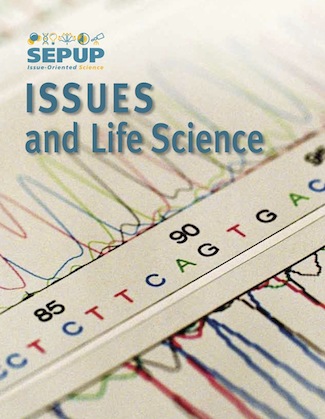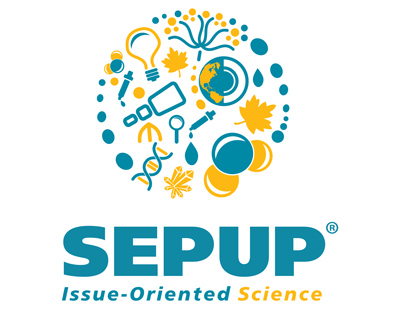IALS: Teacher Links
Generally Helpful Sites
Use this site to enrich your knowledge about scientists presented in SALI. Includes Darwin, Lamarck, Mendel and Pasteur. Entries have links to related scientists. Eric Weisstein’s World of Science is written and maintained by the author as a public service for scientific knowledge and education.
Unit A: Experimental Design–Studying People Scientifically
Activity 2: The Pellagra Story
This video segment from A Science Odyssey profiles Dr. Joseph Goldberger and his search for a cure for pellagra, a poorly understood disease that ravaged the American South in the early 1900s. Download Pellagra Video (no captions) to save the video and view it in full screen. It is recommended that you have the latest version of QuickTime installed to properly view this video. This video is from PBS LearningMedia™.
Activity 3: Testing Medicines: A Clinical Trial
Find out about ongoing clinical trials, protocols and risk analyses. This site has an extensive glossary and is a good resource for student extension activities. Site created by WebMD, a professional organization that provides health information on the Internet.
Some IALS activities provide the opportunity for students in classrooms across the country to compare their data with each other. Click the above link to submit your students’ data.
Compare your class data for Activity 3
Some IALS activities provide the opportunity for students in classrooms across the country to compare their data with each other. Click the above link to see data from other classrooms.
Some IALS activities provide the opportunity for students in classrooms across the country to compare their data with each other. Click the above link to submit your students’ data.
Compare your class data for Activity 5
Some IALS activities provide the opportunity for students in classrooms across the country to compare their data with each other. Click the above link to see data from other classrooms.
^ top
Unit B: Body Works

Activity 12: What’s Happening Inside?
Transparency: Systems to Cells – 1
Transparency: Systems to Cells – 2
Above are the electronic versions of the transparencies that were previously only available in the kit.
Explore activities and other resources on the nervous system. Site maintained by Eric Chudler, a research professor at the University of Washington in Seattle, Washington.
Learn about the nervous system and take a trip through a virtual brain during this 30 minute video from the University of Washington television.
Learn more about sound and hearing as you explore this site from the University of Washington, “Neuroscience for Kids.”
Learn more about light and vision as you explore this site from the University of Washington, “Neuroscience for Kids.”
Extension Activity: “Human Reproduction”
This SEPUP extension activity includes both teacher and student pages for a reading on human reproduction, including the male and female reproductive systems and development of the embryo.
Activities 15 and 17
Transparency: Systems to Cells – 1
Above is the electronic version of a transparency that was previously only available in the kit.
Activity 16
Transparency: Systems to Cells – 2
Above is the electronic version of a transparency that was previously only available in the kit.
Activity 17
Please make sure teachers and students observe the following safety note when conducting these activities: Wear safety goggles while working with chemicals. Do not touch the chemicals or bring them into contact with your eyes or mouth. Wash you hands after completing the activity.
Activity 23
Label the parts of the heart in this interactive.
Heart and Circulatory Animation
This animated video details how the heart works as a pump in the circulatory system.
Activity 26
Normal and Abnormal Heart Sounds – Download
Play this video for the class so that students can hear normal and abnormal heart sounds.
^ top
Unit C: Cell Biology and Disease
Activity 33: From One to Another
Video on Bubonic Plague – with closed captions
This video segment from A Science Odyssey recounts the tactics employed by San Francisco’s health officials to prevent bubonic plague from reaching America’s West Coast. Download Bubonic Plague Video (no captions) to save and view it in full screen. It is recommended that you have the latest version of QuickTime installed to properly view this video. This video is from PBS LearningMedia™.
Activity 35: A License
If it has been awhile since you used a microscope, you may wish to use this video to review the care and use of a microscope. You may also wish to have absent students view parts of this in order to earn their microscope license.
Activity 42: A Closer Look
Transparency: Systems to Cells – 1
Transparency: Systems to Cells – 2
Above are the electronic versions of the transparencies that were previously only available in the kit.
Activity 44
The sets of orange Classification Cards should contain 6 cards in one set (labeled A-F). In some sets, card F “Viruses” may be missing. Click here to download and print out the replacement card. This only applies to editions printed prior to 2012.
Activity 50: Fighting Back
Video on the Discovery of Penicillin – with closed captions
In this video segment from A Science Odyssey on PBS LearningMedia™, learn what led British researcher Alexander Fleming to the chance discovery of antibacterial properties in a mold extract he later named penicillin. Download Video on the Discovery of Penicillin (no captions) to save. It is recommended that you have the latest version of QuickTime installed to properly view this video.
Video on Producing Penicillin – with closed captions
In this video segment from A Science Odyssey on PBS LearningMedia™, learn about the team of scientists from Oxford University that conducted tests on penicillin, in addition to the mass production of this new drug. Download Video on Producing Penicillin (no captions) to save. It is recommended that you have the latest version of QuickTime installed to properly view this video.
^ top
Unit D: Genetics
Activity 56: Joe’s Dilemma
This video is the same as the video included in the IALS kit. Acclaimed video from the National Marfan Foundation that teaches young people about inheritance and genetic disorders and an appreciation for human diversity.
Activity 57: Reproduction
Extension Activity: “Life Cycles of Animals and Plants”
This SEPUP extension activity includes both teacher and student pages for a reading on the life cycles of various groups of animals and plants.
Activity 59: Gene Combo
Compare your class data for Activity 59
Some IALS activities provide the opportunity for students in classrooms across the country to compare their data with each other. Click the above link to see data from other classrooms.
Activity 62: Analyzing Genetic Data
Extension Activity: “Life Cycles of Animals and Plants”
This SEPUP extension activity includes both teacher and student pages for a reading on the life cycles of various groups of animals and plants.
Compare your class data for Activity 62
Some IALS activities provide the opportunity for students in classrooms across the country to compare their data with each other. Click the above link to see data from other classrooms.
Activity 64: Nature and Nurture
Compare your class data for Activity 64
Some IALS activities provide the opportunity for students in classrooms across the country to compare their data with each other. Click the above link to see data from other classrooms.
Activity 66
Below are corrections for Activity 66 in editions printed prior to 2012.
Activity 67: What Would You Do?
Legal Issues Relating to Discrimination and Privacy
Click on the link above for a state by state description of the laws and legal protections relating to genetic testing.
Activity 68: Investigation: Searching for the Lost Children
Activity 69: Evidence from DNA
Activity 70: Finding the Lost children
Activity 71: Should We?
This site presents an example of the societal implications of DNA testing. It provides documented cases of post-conviction DNA testing which yield conclusive proof of defendants’ innocence. Good discussion of the limitations of DNA testing. The Innocence Project is an independent non-profit legal clinic and resource center, maintained by Barry Scheck and Peter Neufeld at the Benjamin N. Cardozo School of Law at Yeshiva University.
^ top
Unit E: Ecology
Activity 73: Introduced Species
Sea Grant Nonindigenous Species Site
This is a good resource which includes a comprehensive collection of research publications and education materials on zebra mussels and other aquatic introduced species.
Activity 74: Observing Organisms
Activity 83: A Suitable Habitat
Capitalize on student interest in L. variegetus at this site which offers laboratory support including videos of locomotion and blood pulsation. Contains information to guide student extensions in experimental design. E-mail contact available. Site is maintained by Charlie Drewes, Ph.D., Iowa State University.
Activity 75: Classifying Animals
Discover Life can help you guide your students in classification of living things and in the use of population maps in ecology, as well as to report local findings. Includes an IDnature guide that builds sorting skills.
This site is maintained by the Polistes Foundation which is comprised of scientists whose primary goal is to increase the number of people gathering reliable data on species and their distribution.
Activity 76: People, Birds and Bats
Discover Life can help you guide your students in classification of living things and in the use of population maps in ecology, as well as to report local findings. Includes an IDnature guide that builds sorting skills.
This site is maintained by the Polistes Foundation which is comprised of scientists whose primary goal is to increase the number of people gathering reliable data on species and their distribution.
Extension Activity: “Life Cycles of Animals and Plants”
This SEPUP extension activity includes both teacher and student pages for a reading on the life cycles of various groups of animals and plants.
^ top
Unit F: Evolution
NSTA Position Statement on the Teaching of Evolution
This document clearly states the importance of teaching evolution in schools as a major unifying scientific concept, provides background information, and appeals to teachers, administrators and local leaders to take informed and active positions on this issue.
^ top
Unit G: Bioengineering
Activity 103: Bioengineering Case Studies
Man Born With No Legs Inspires
Read a short, inspiring article about a man born without legs and the tools he uses and adaptations he has made.
Activity 107: Designing an Energy Bar
Food and Nutrition Information from the USDA
An expansive site supported by the United States Department of Agriculture (USDA that provides general information on food and nutrition.
Calories from Exercise – Table
This site provides a table of calories burned for various activities.
Activity 108: Technology and the Life Sciences
Read biographies of scientists and engineers at a site developed by the Society for the Advancement of Chicanos/Hispanics and Native Americans in Science.
Five Inspiring Hispanic Scientists
This site provides biographies of five prominent Hispanic Scientists.
The Faces of Science: African Americans in the Sciences
Read about past and present African American scientists that have contributed to the fields of science and engineering. Site maintained by Mitchell C. Brown of Princeton University.
^ top

